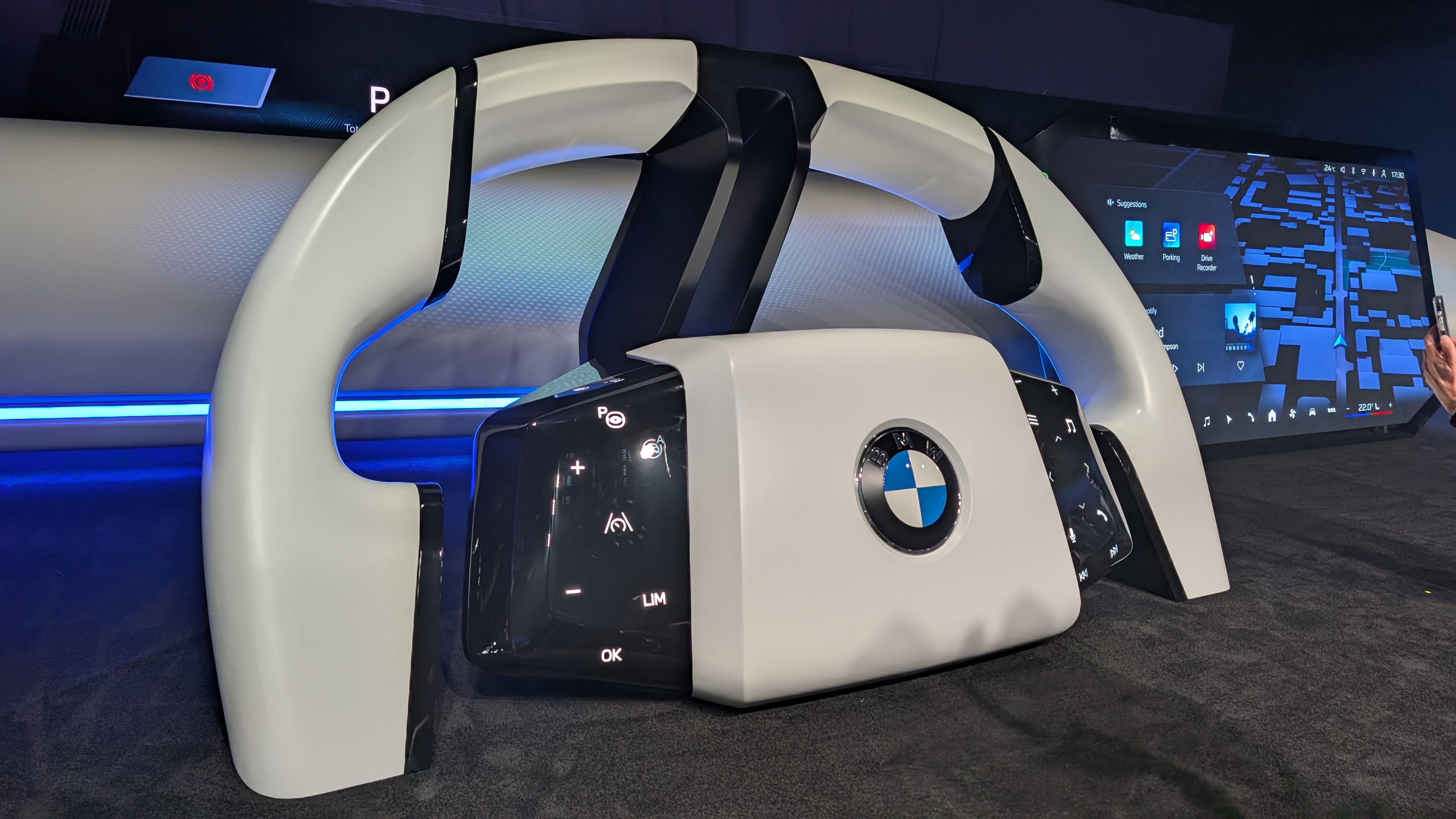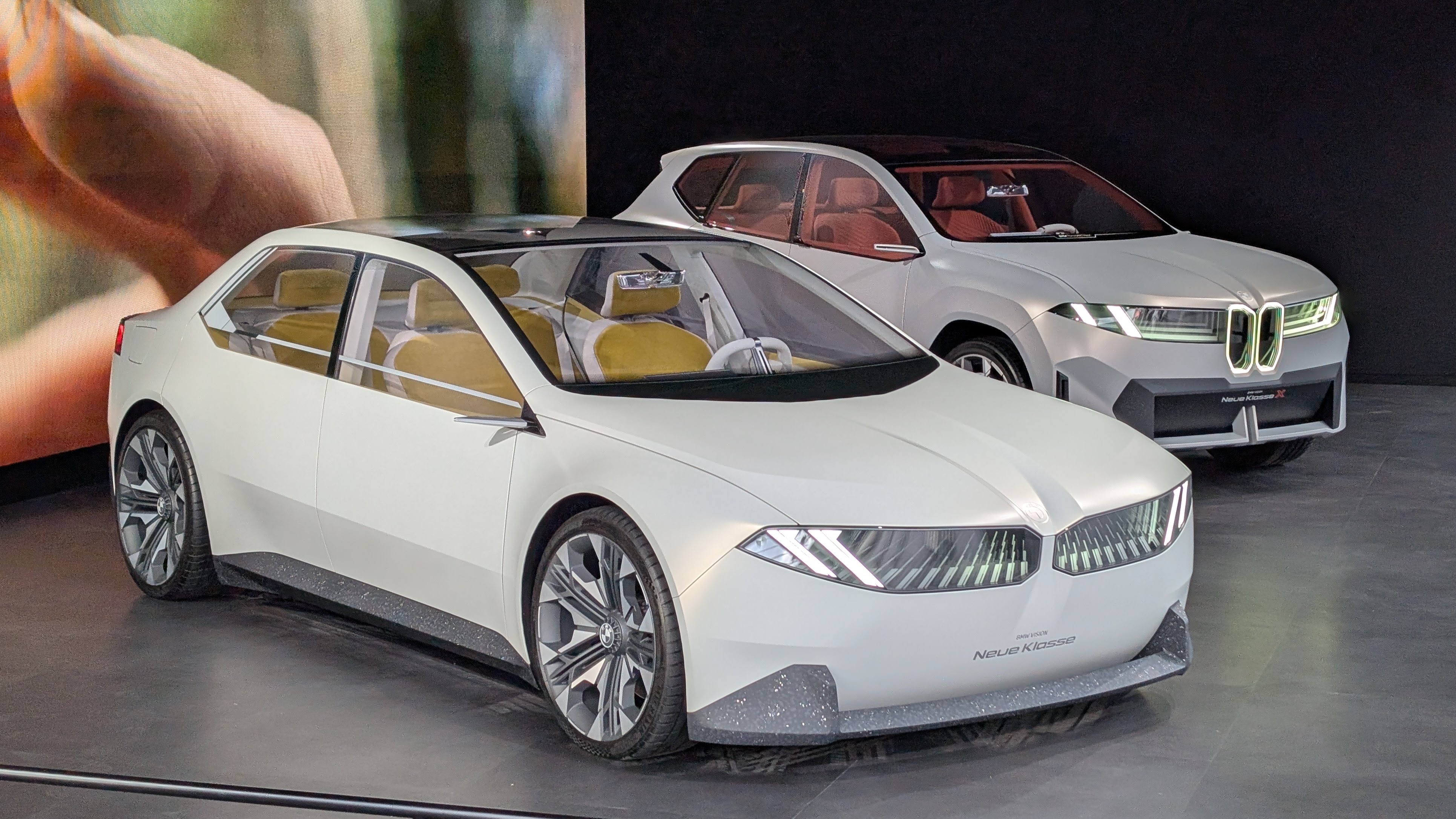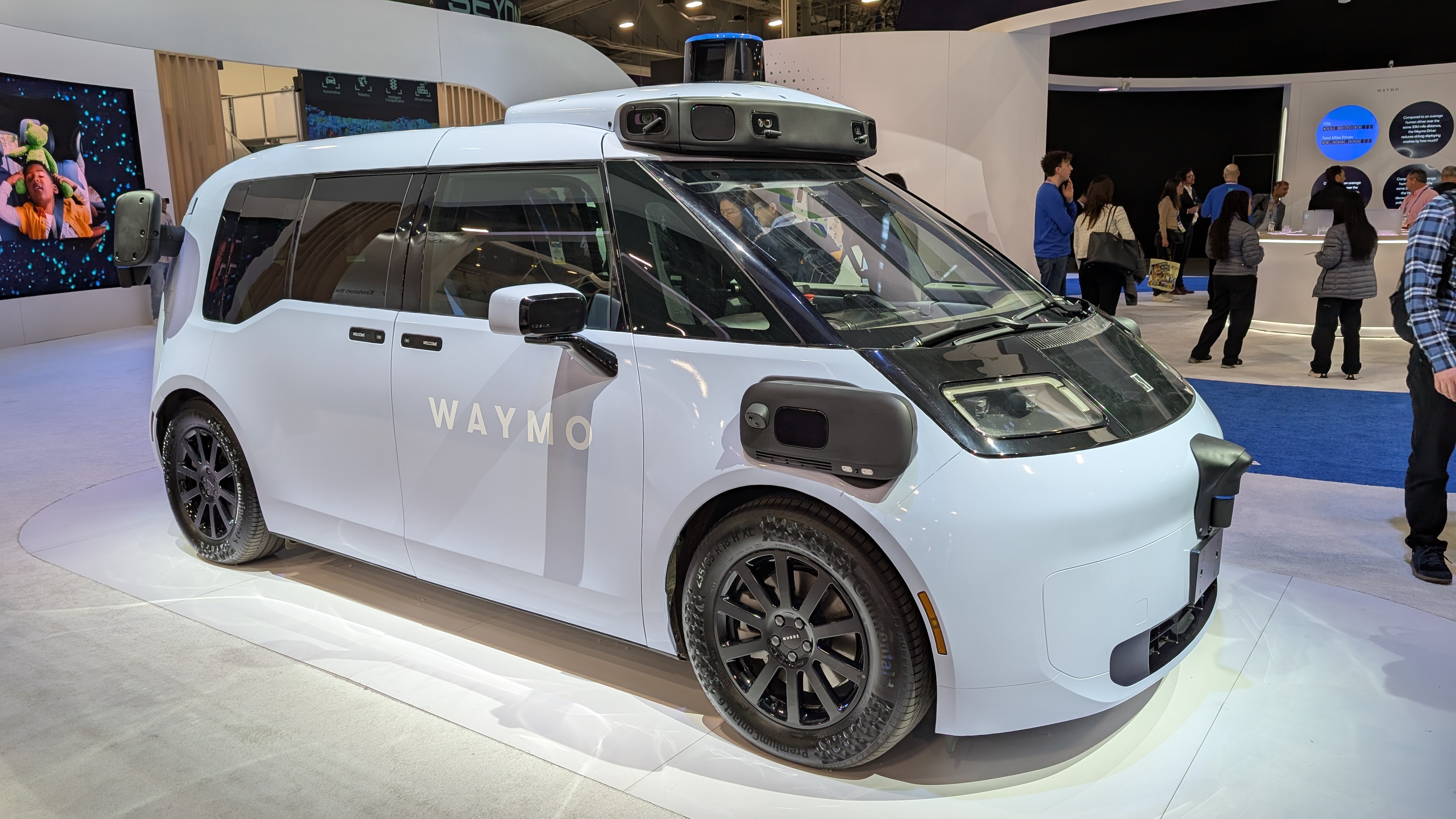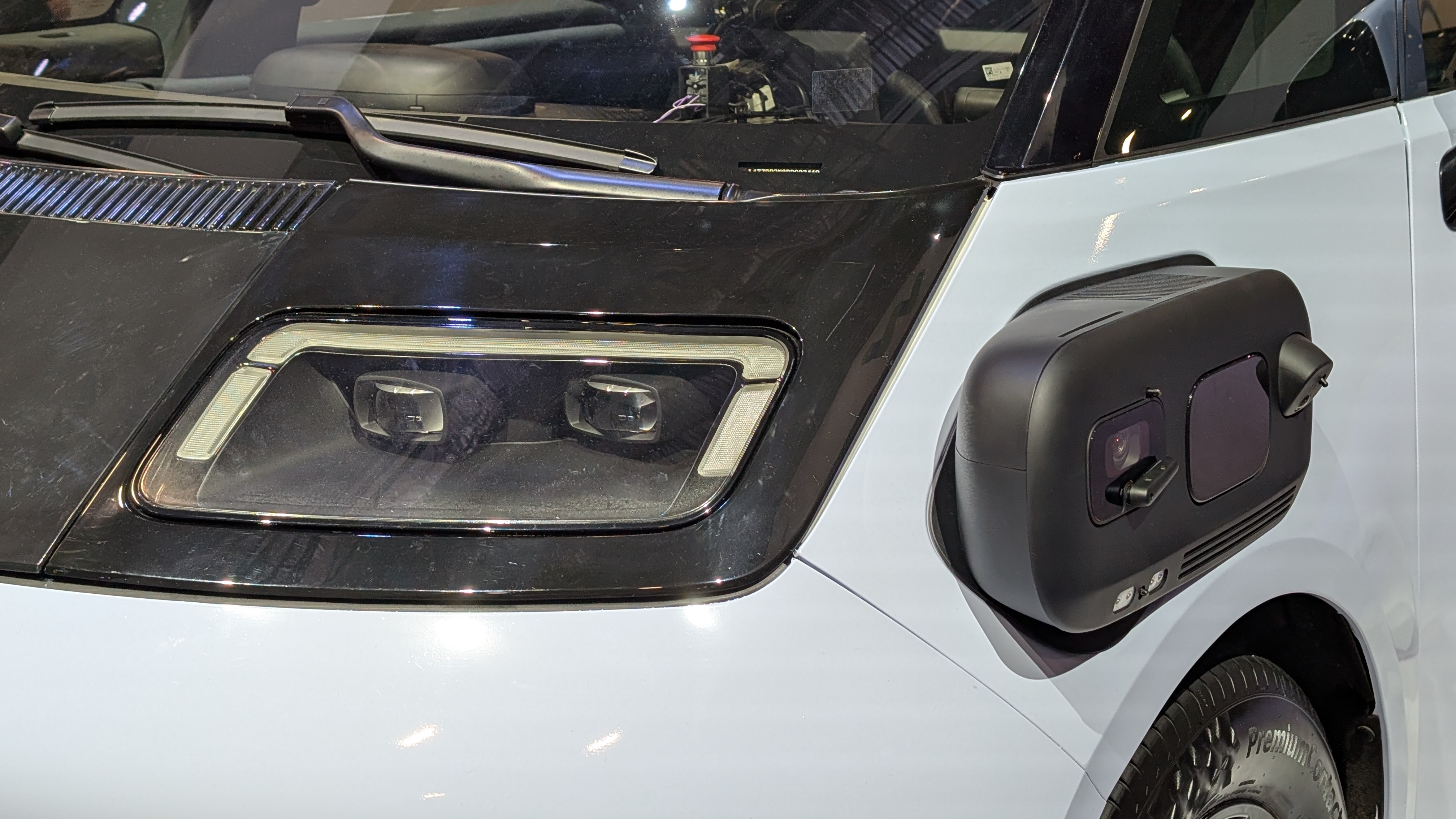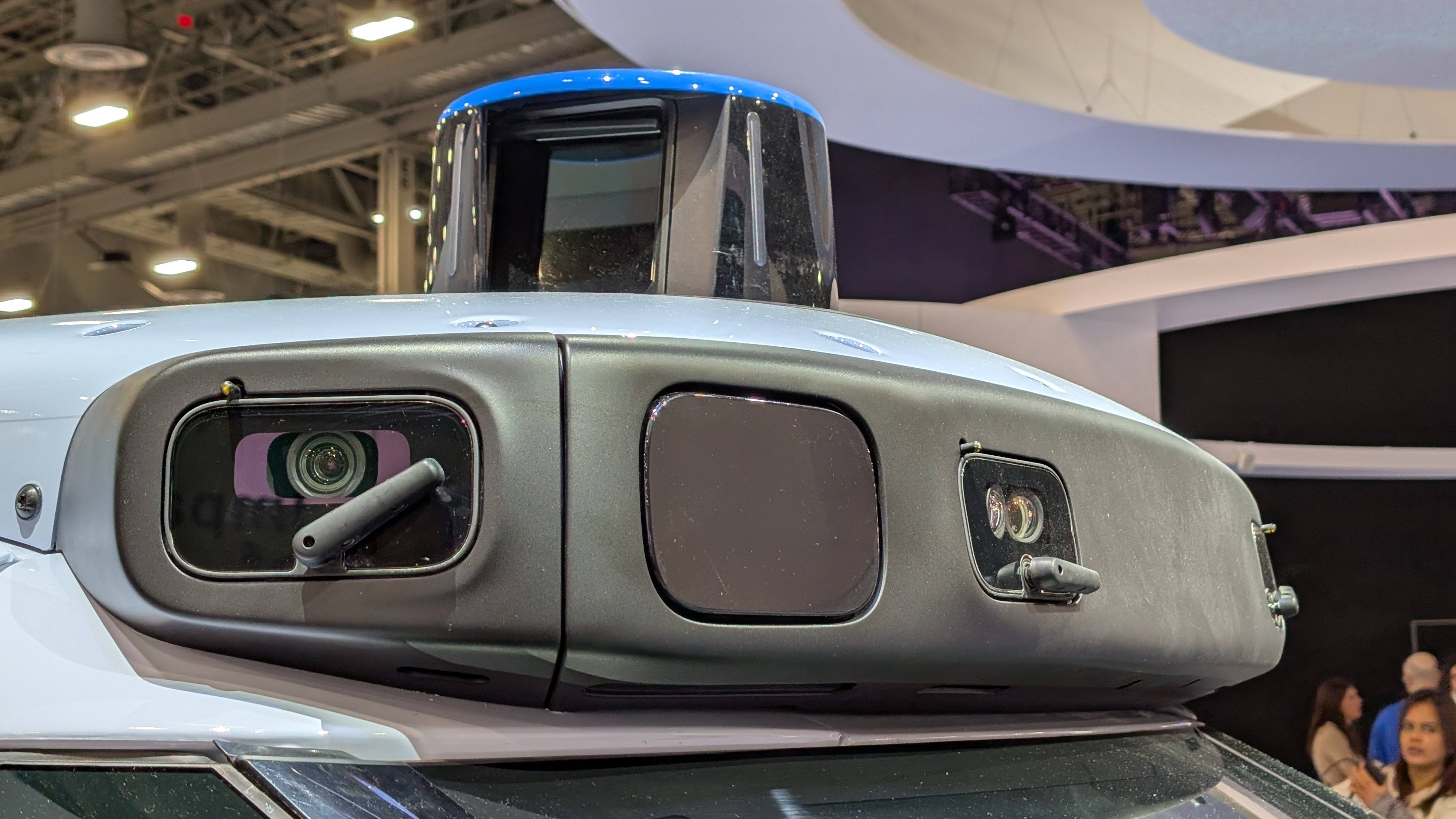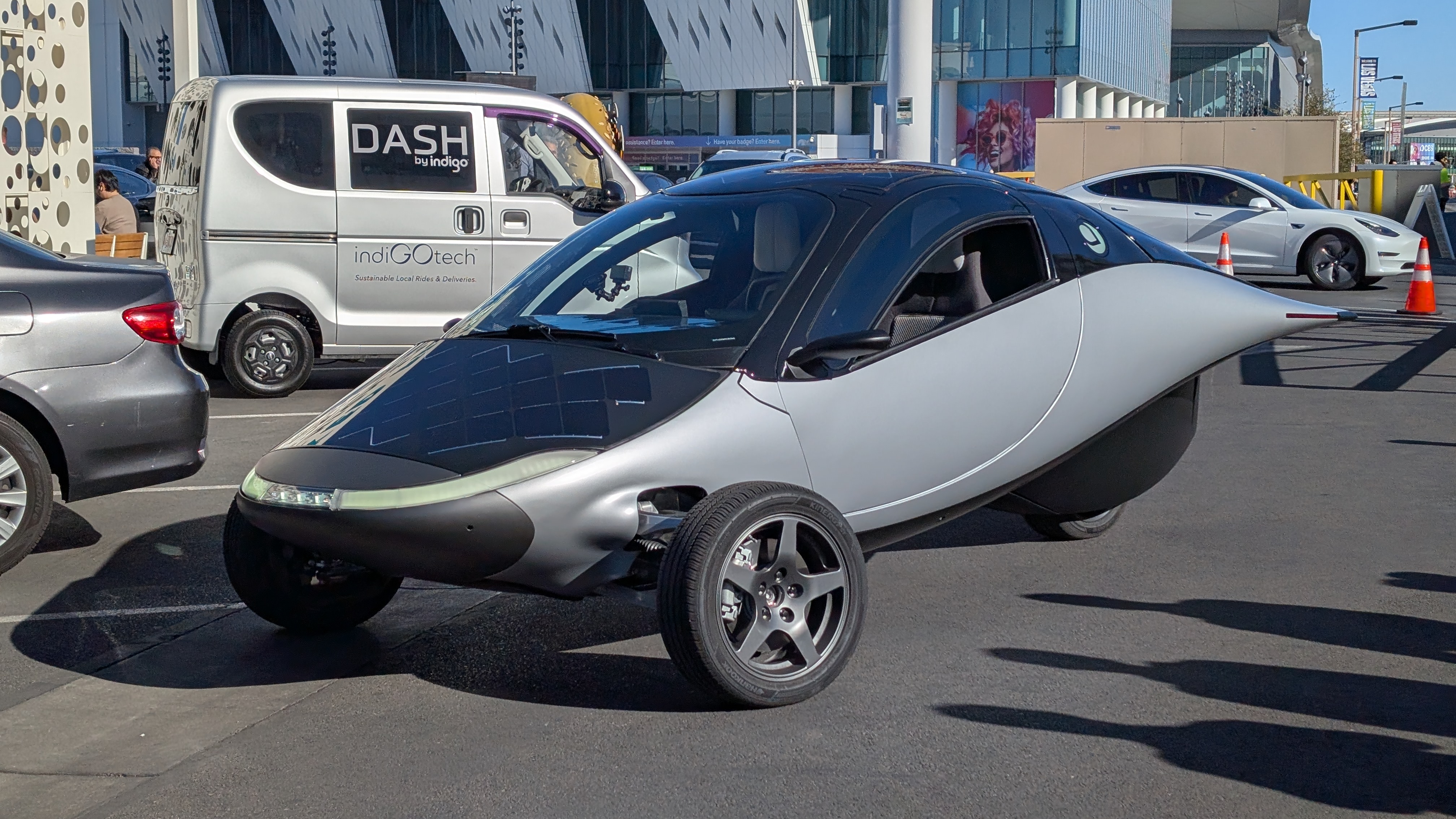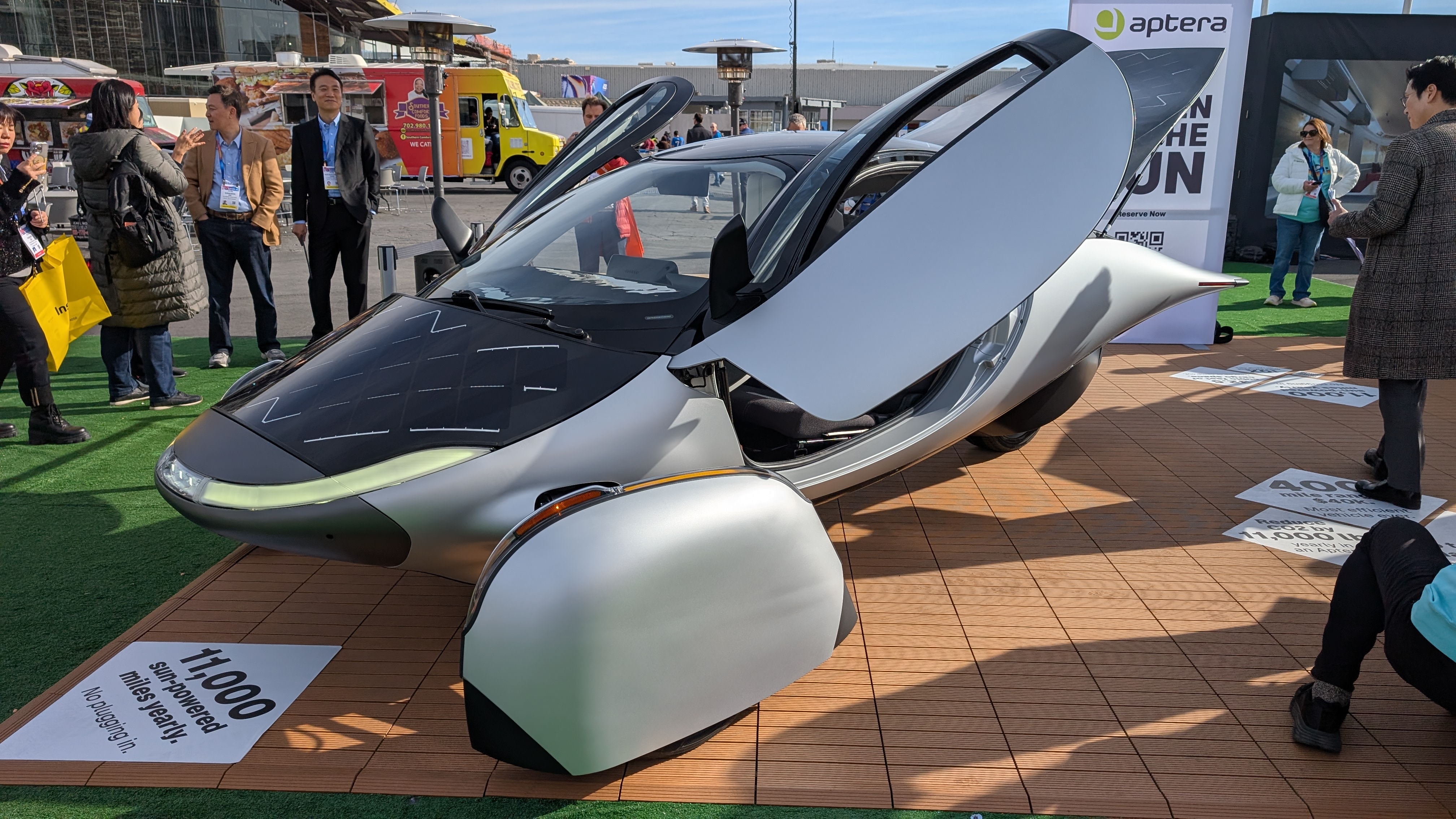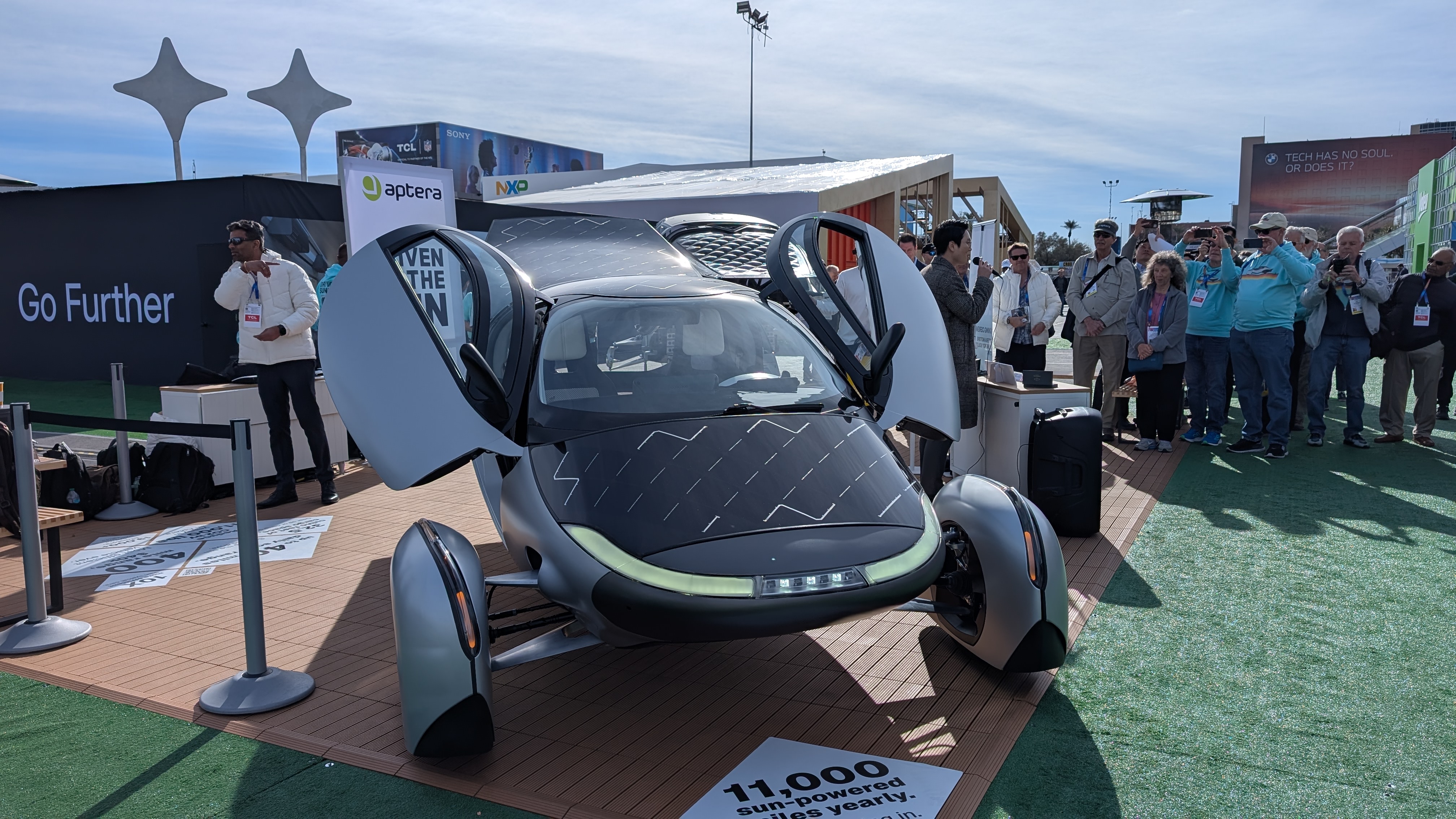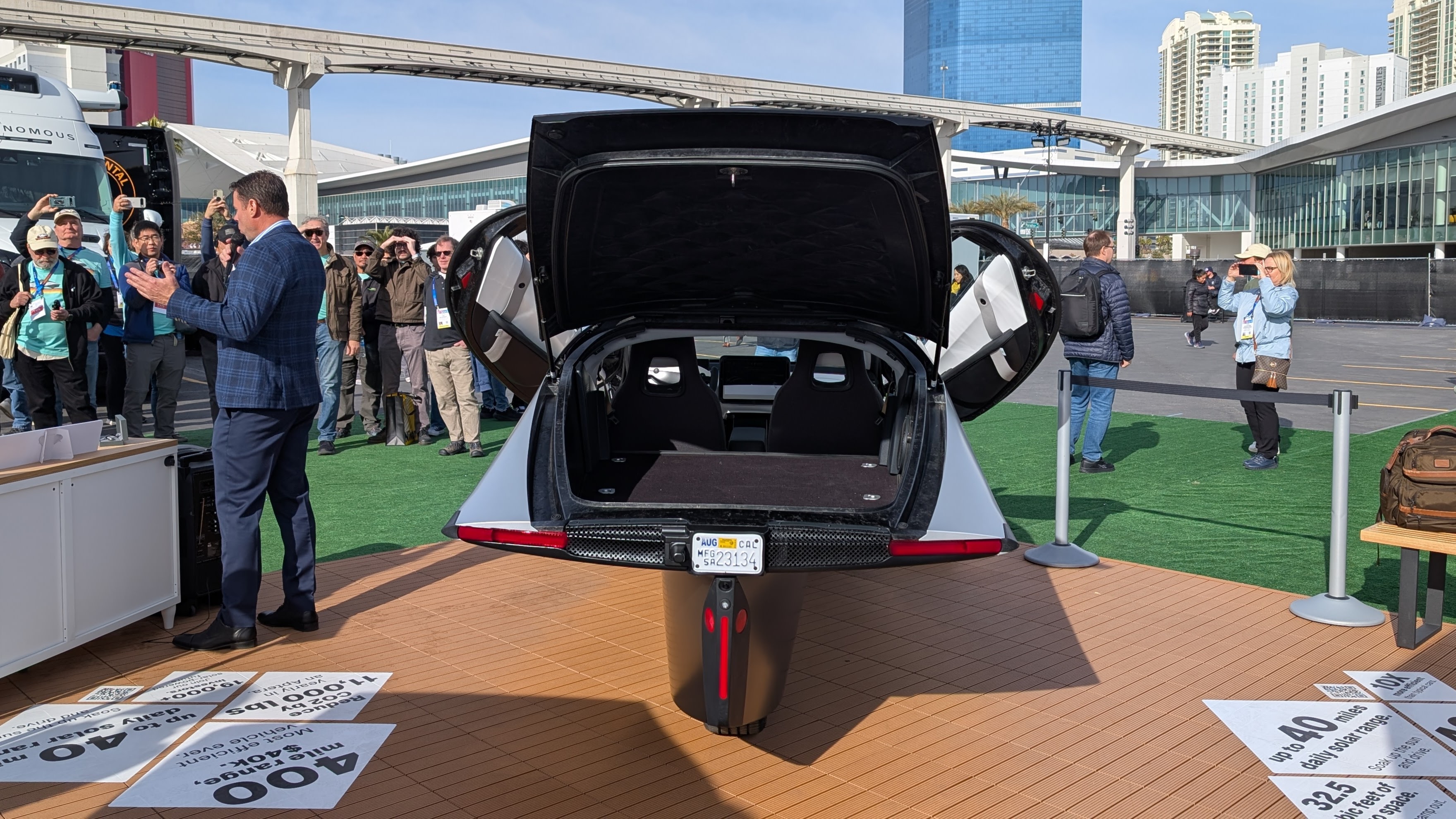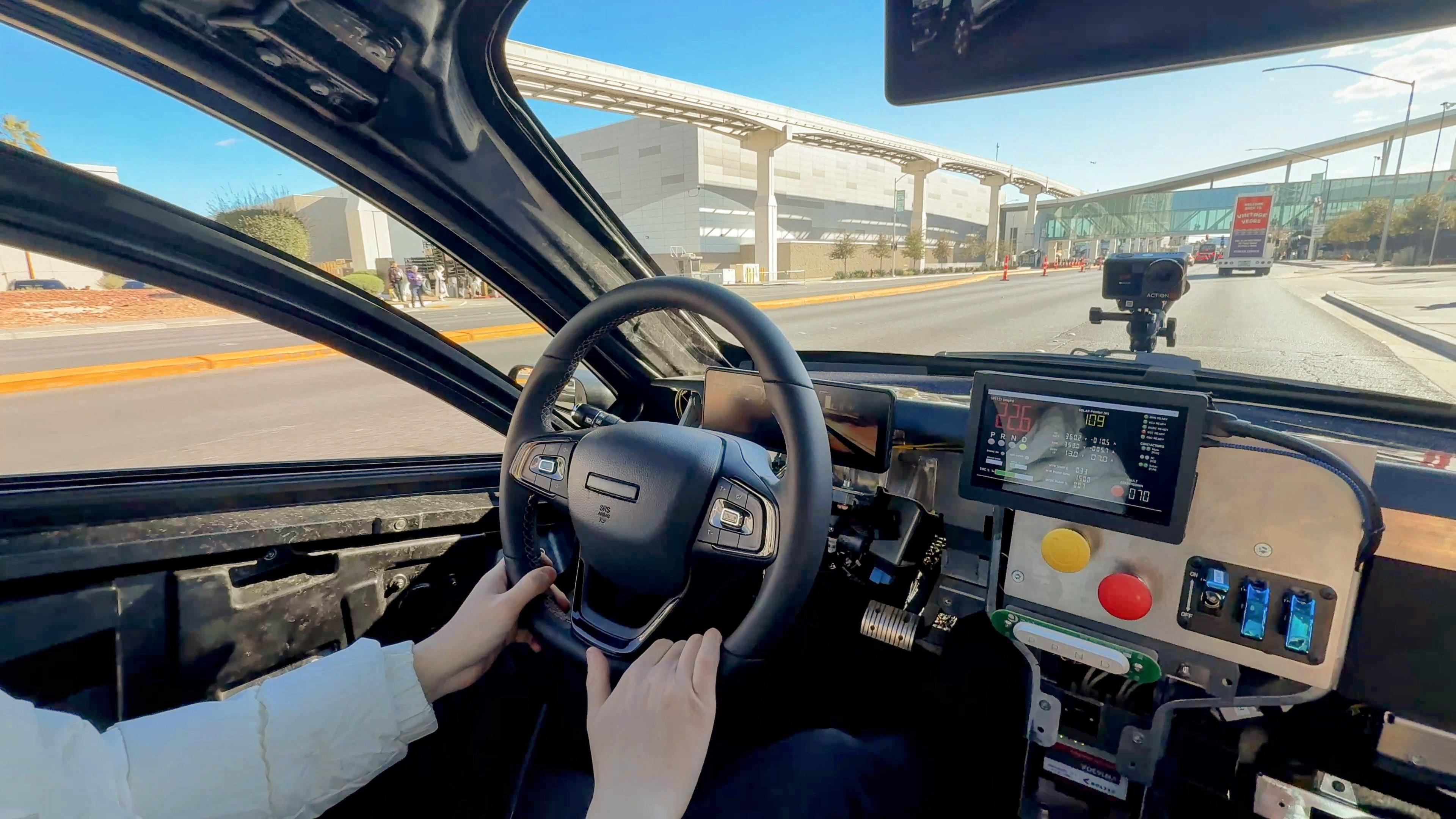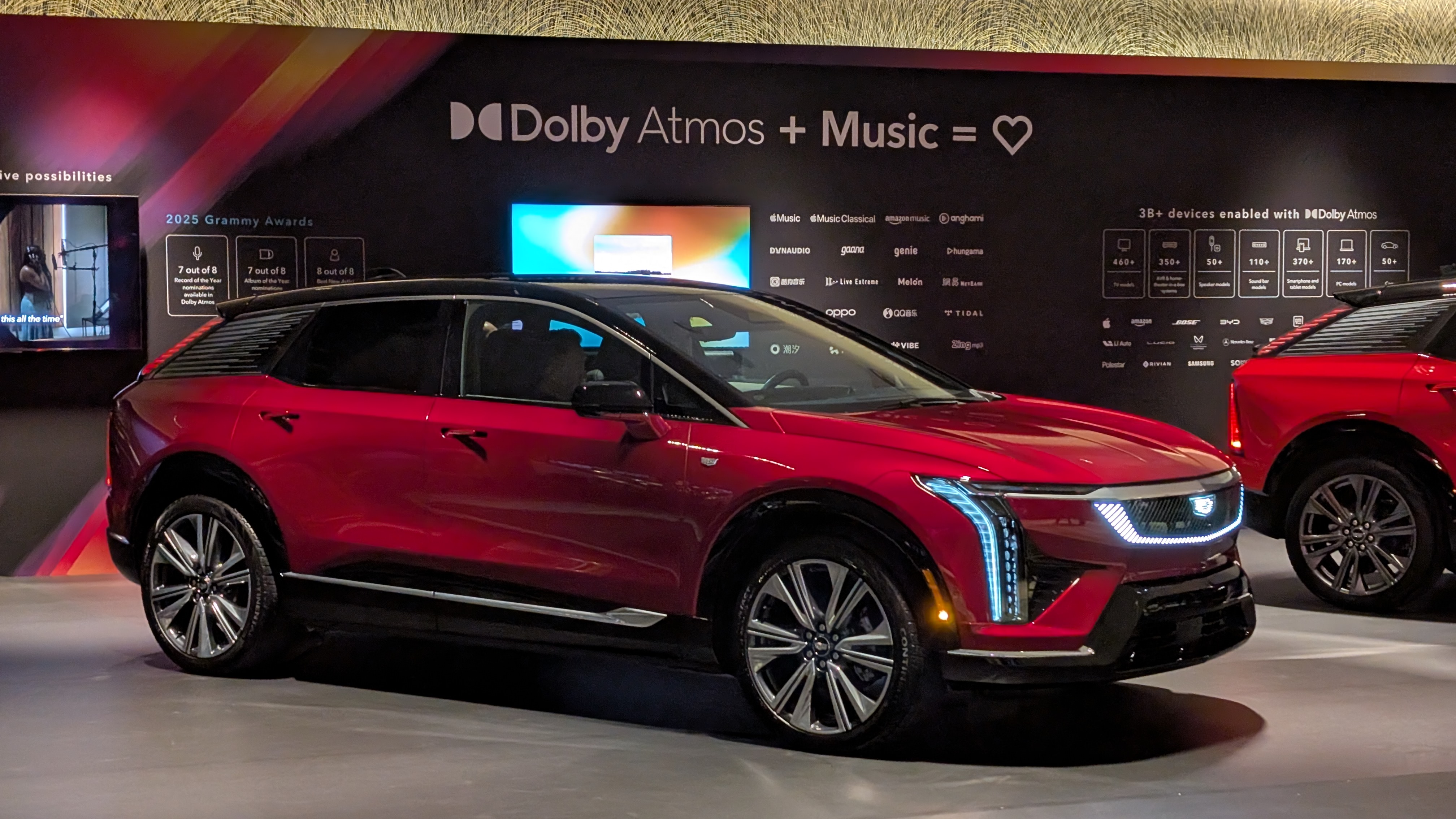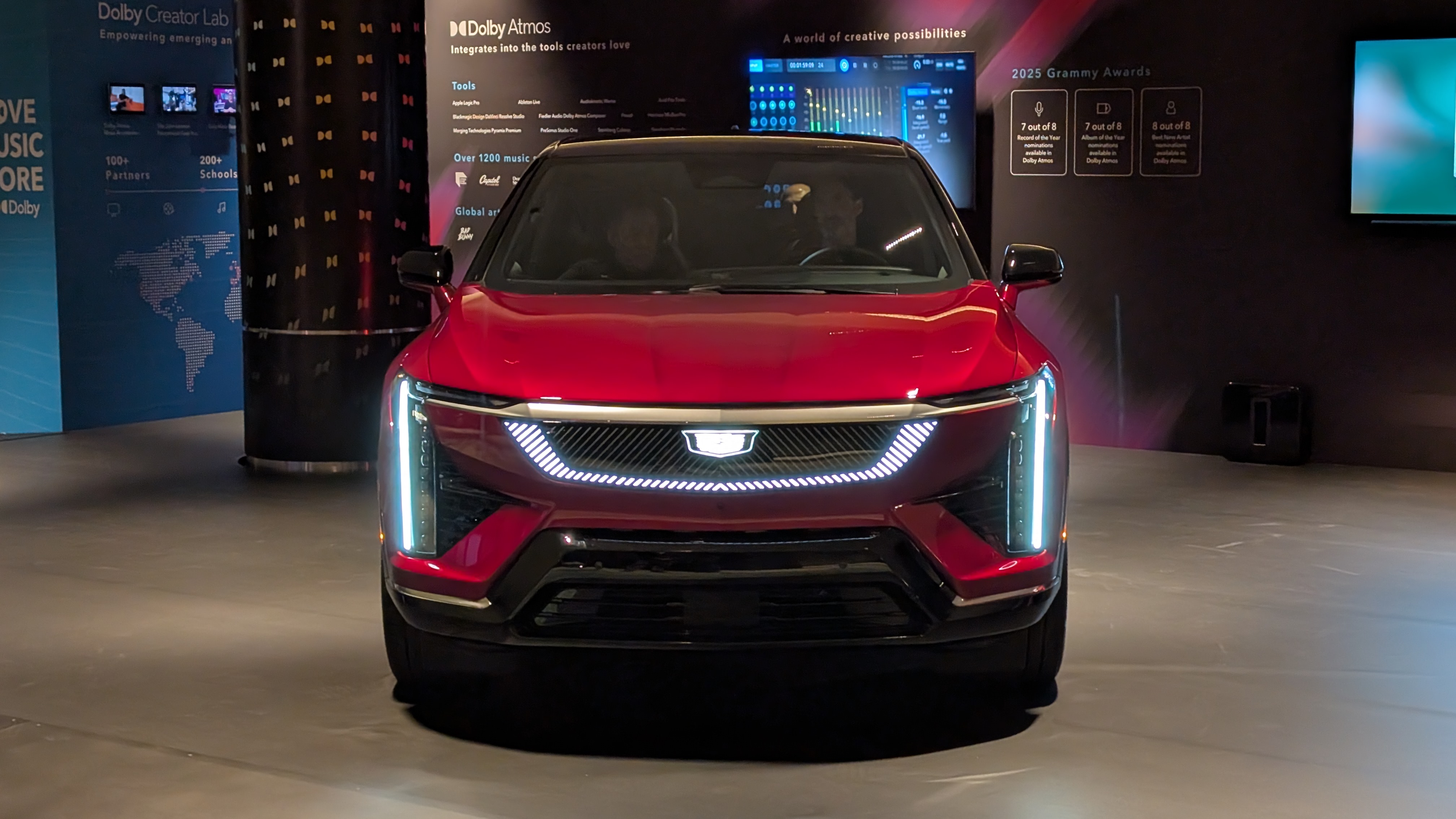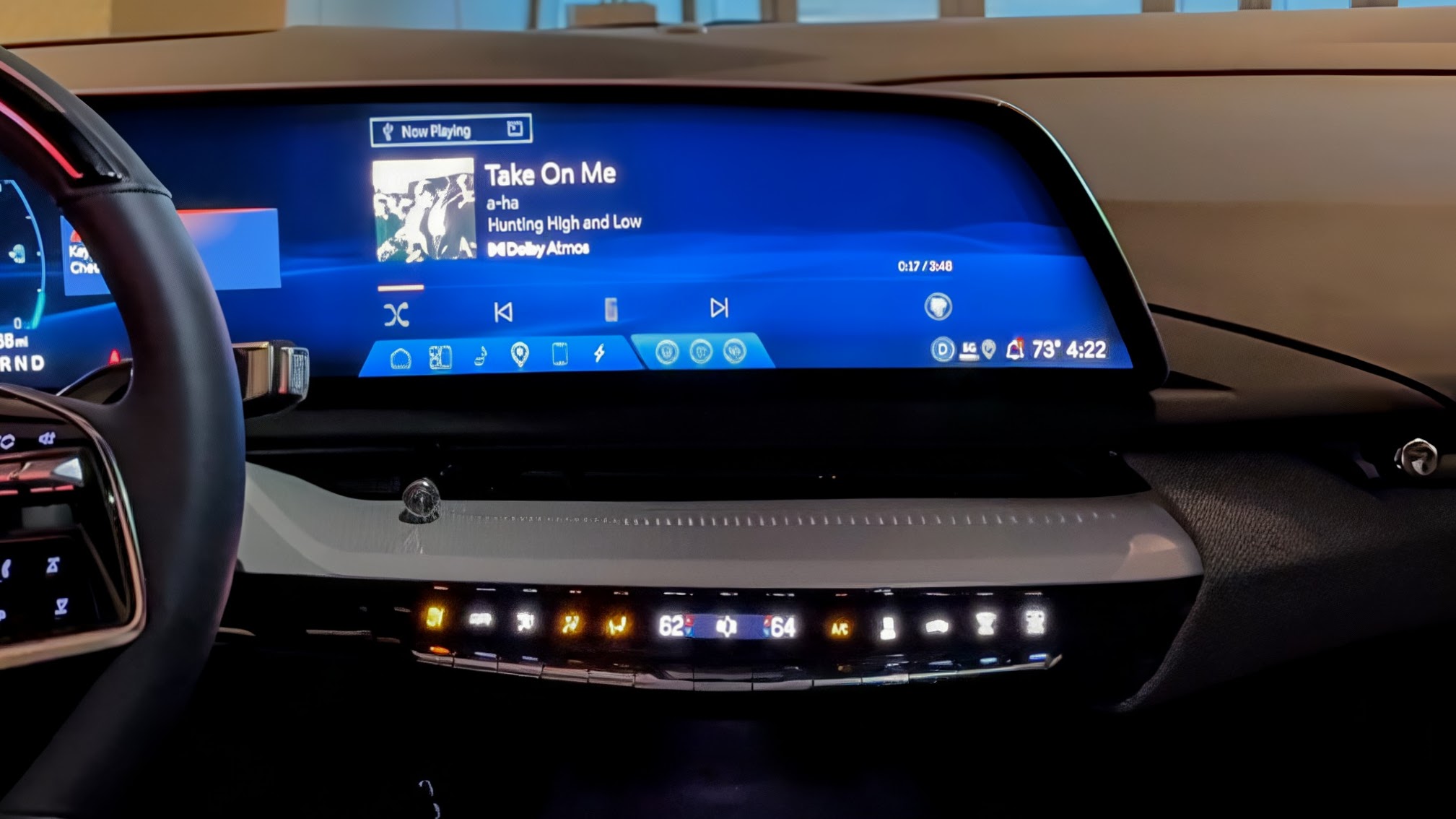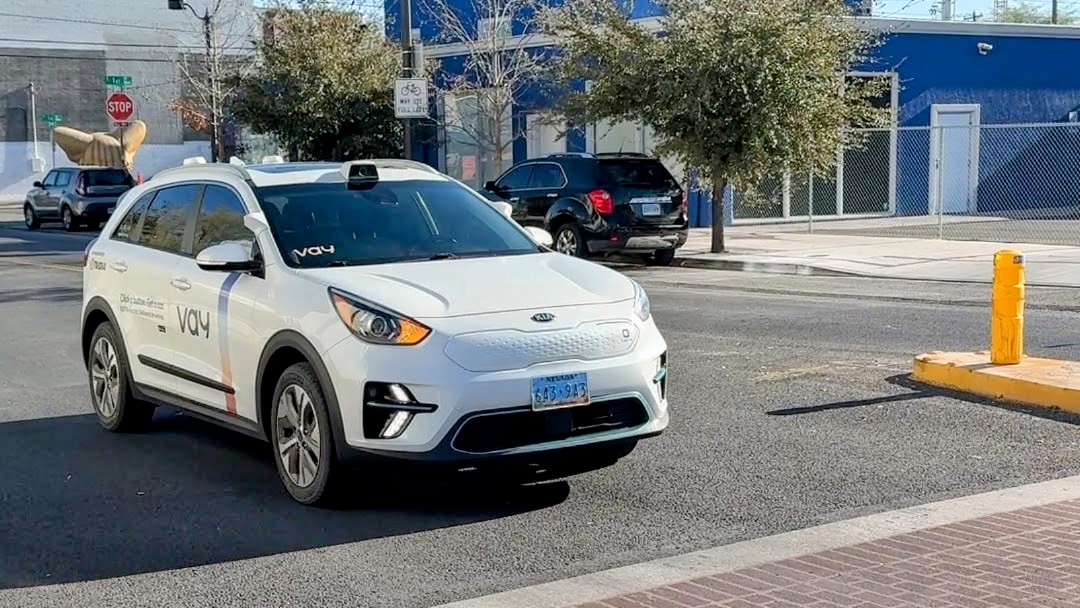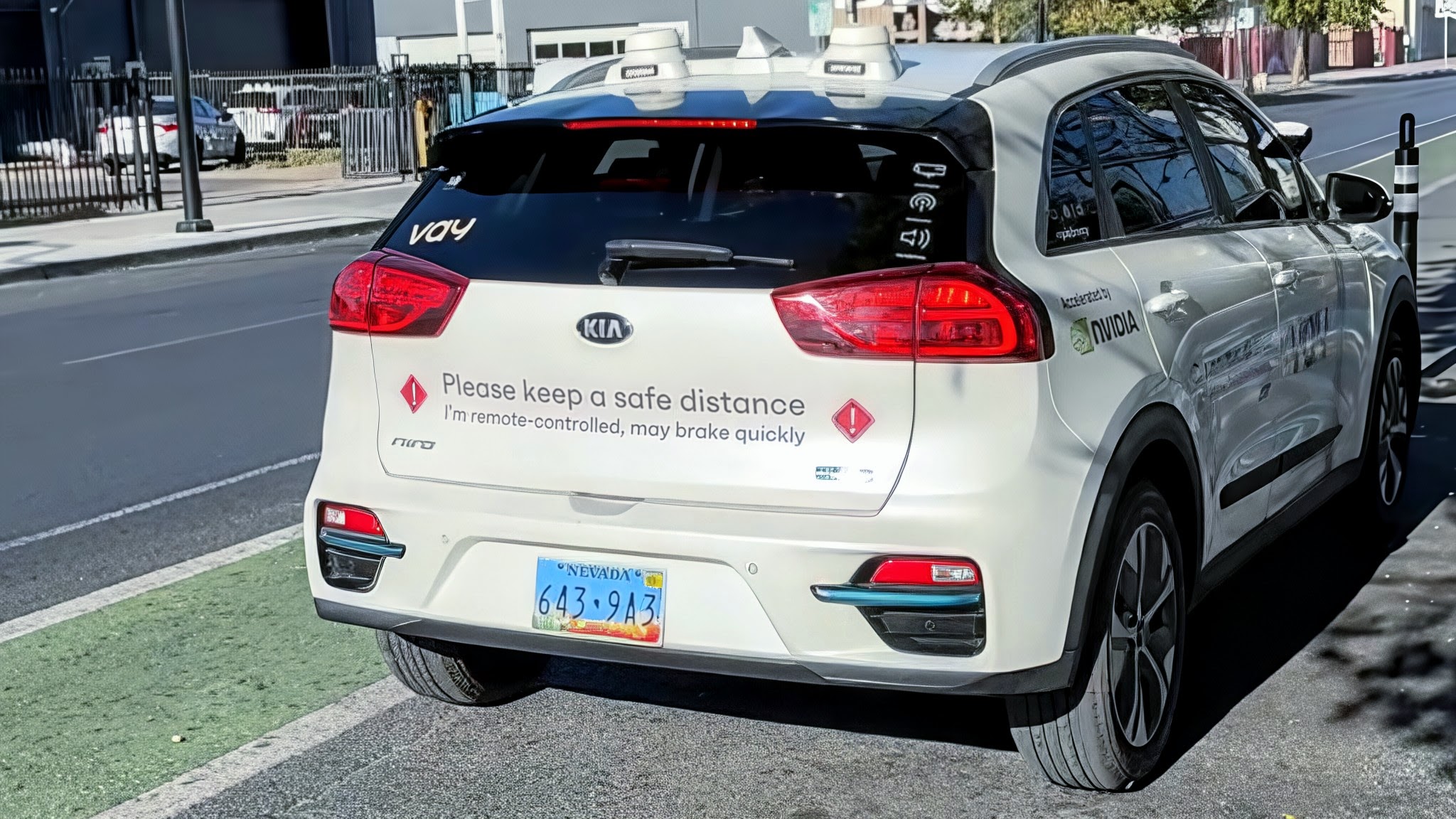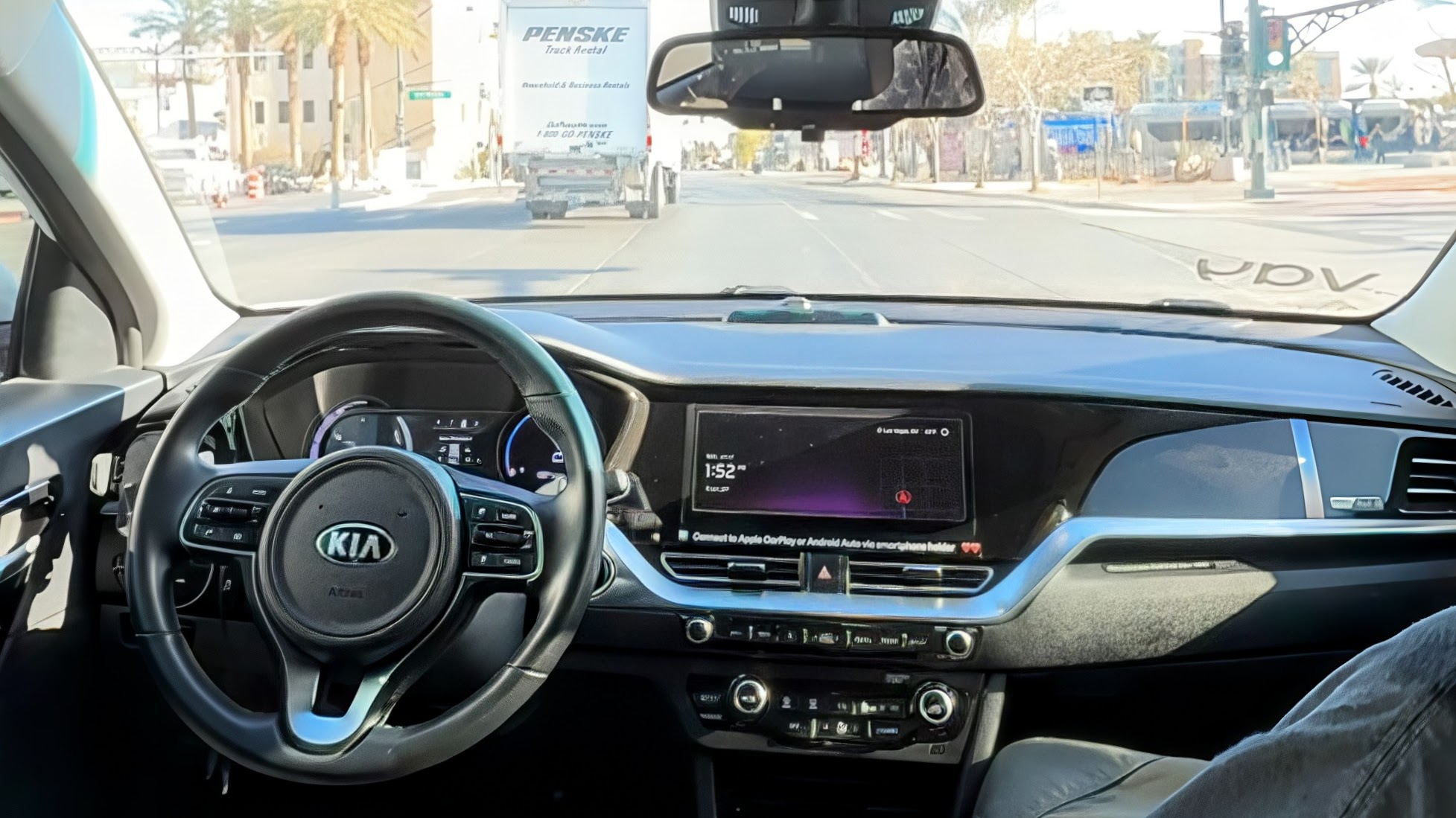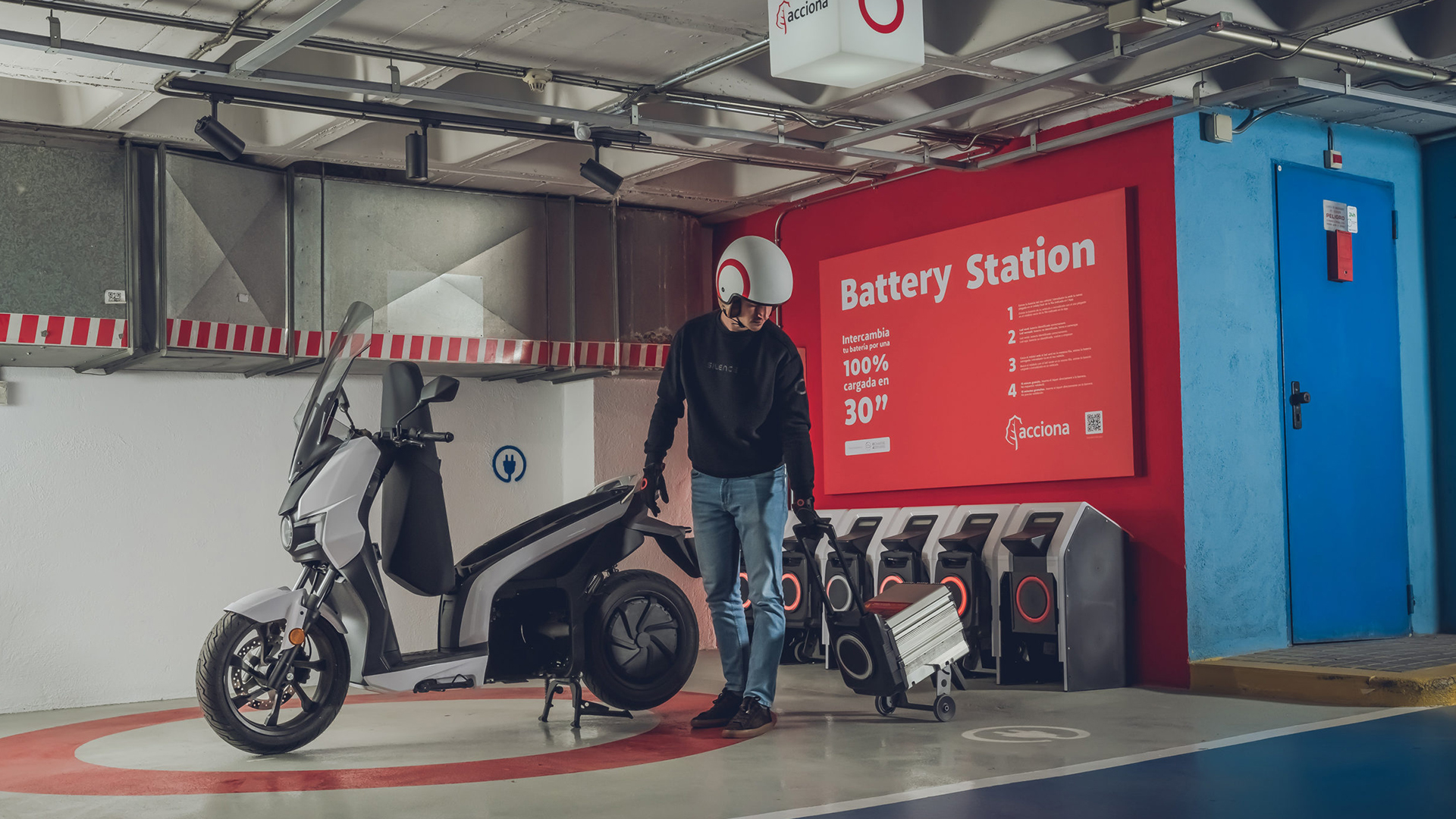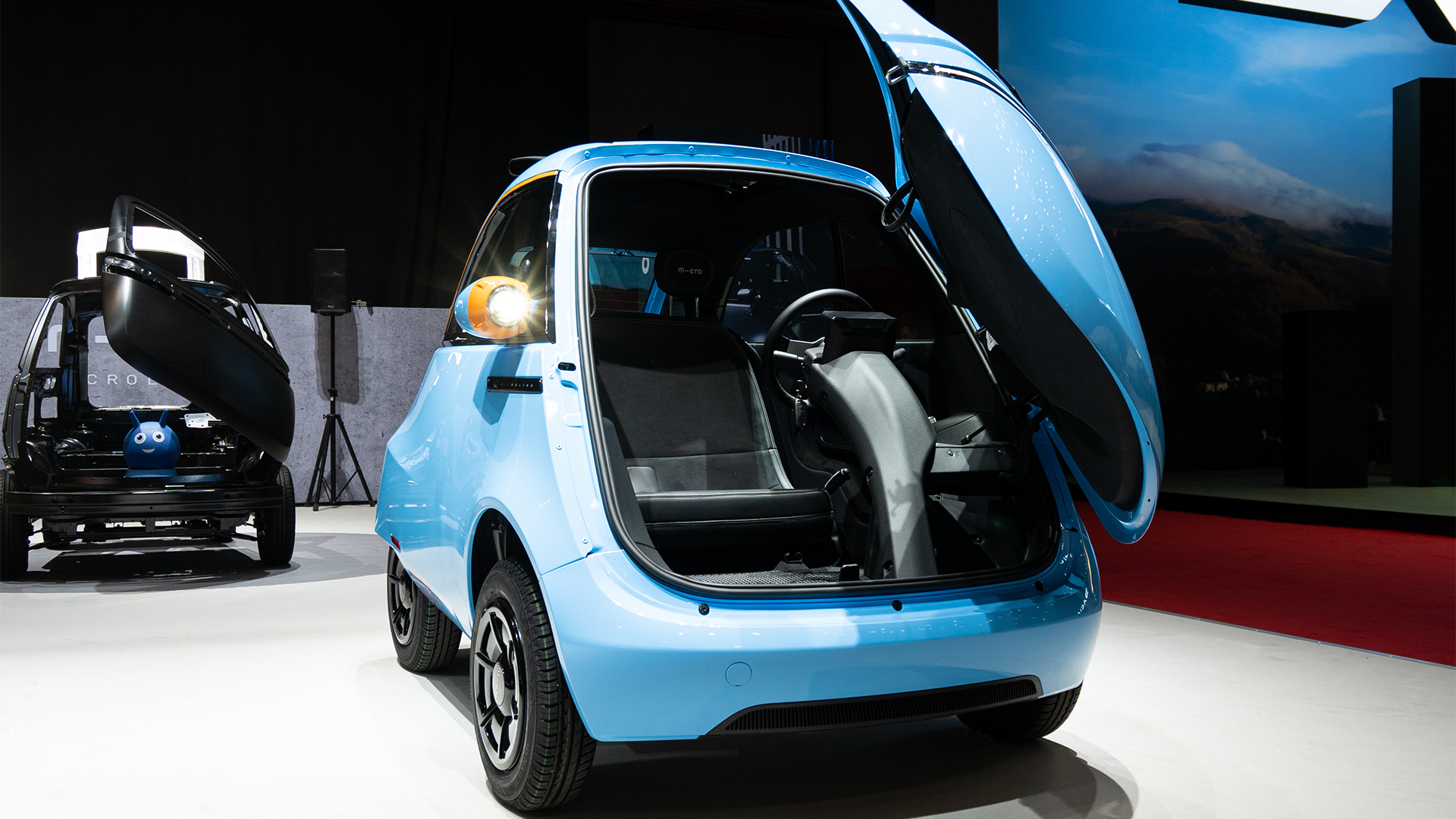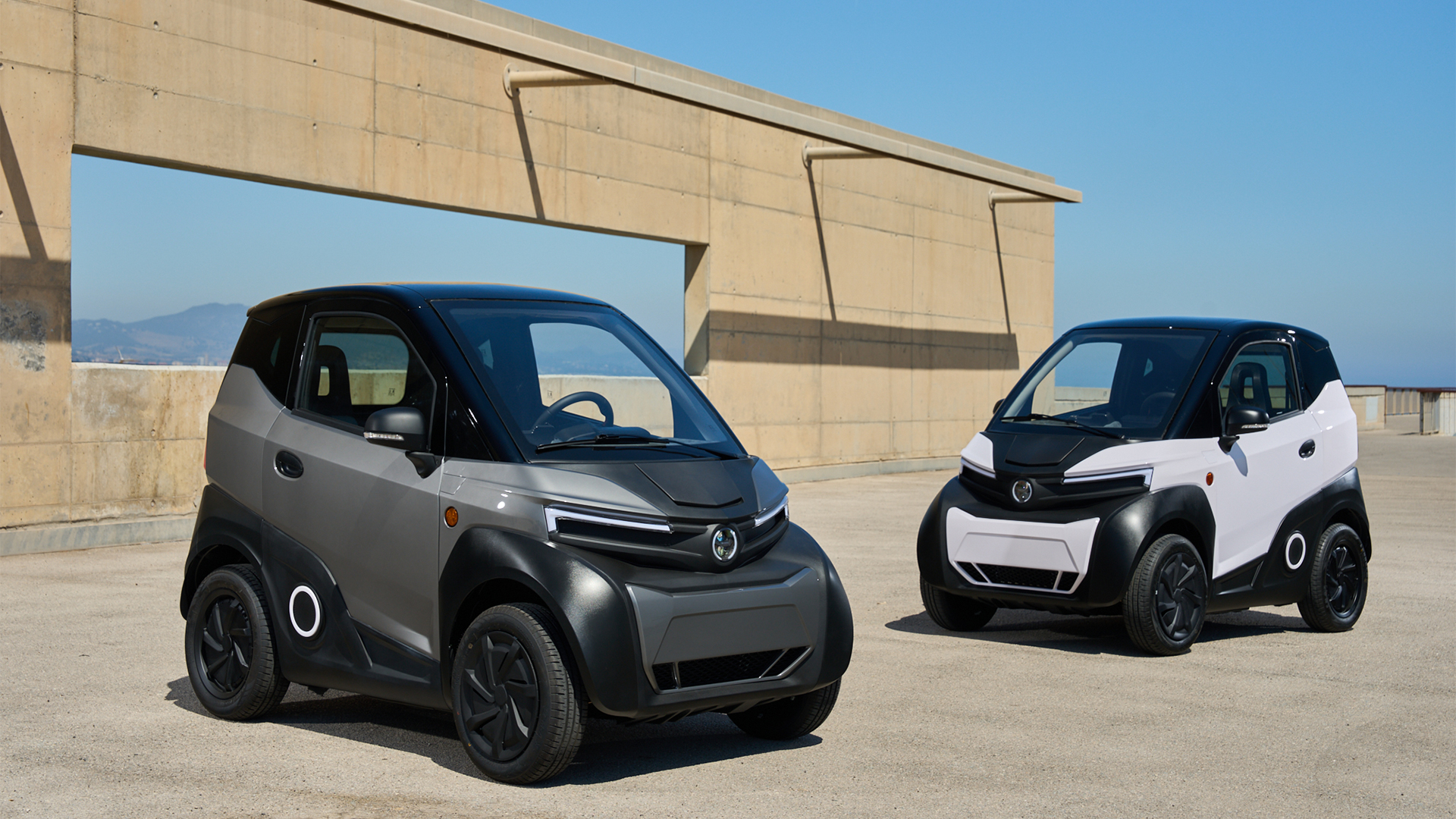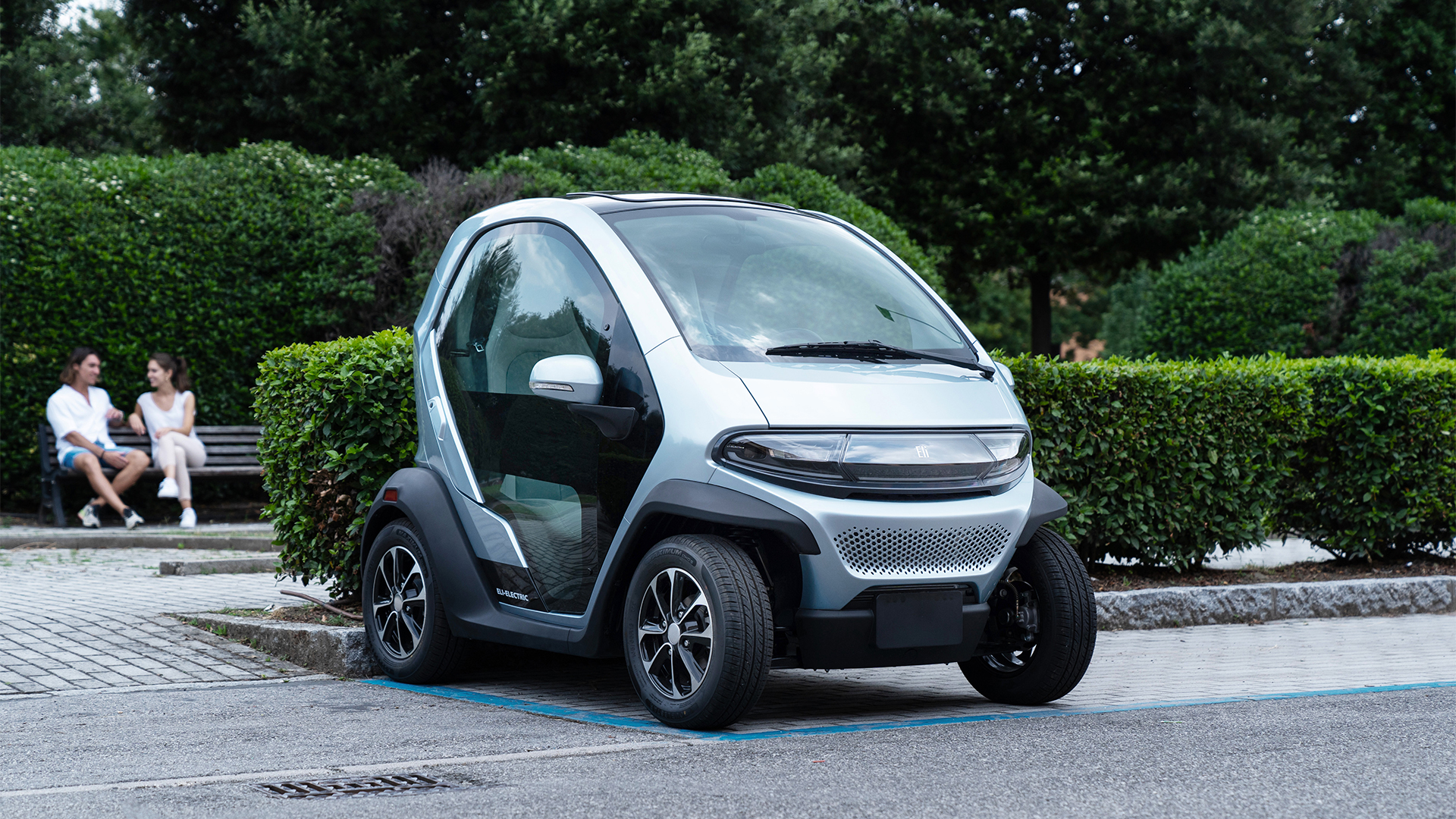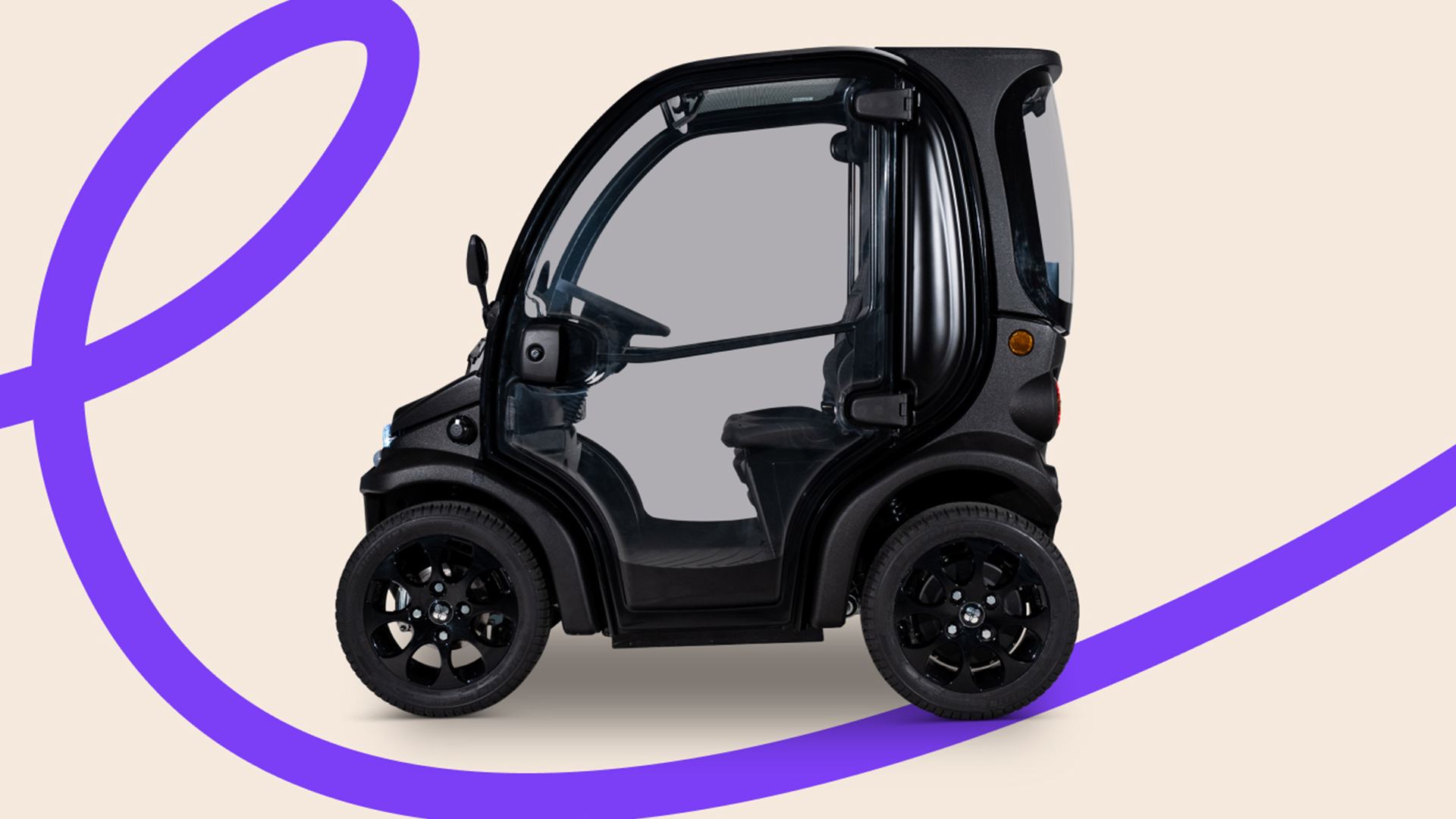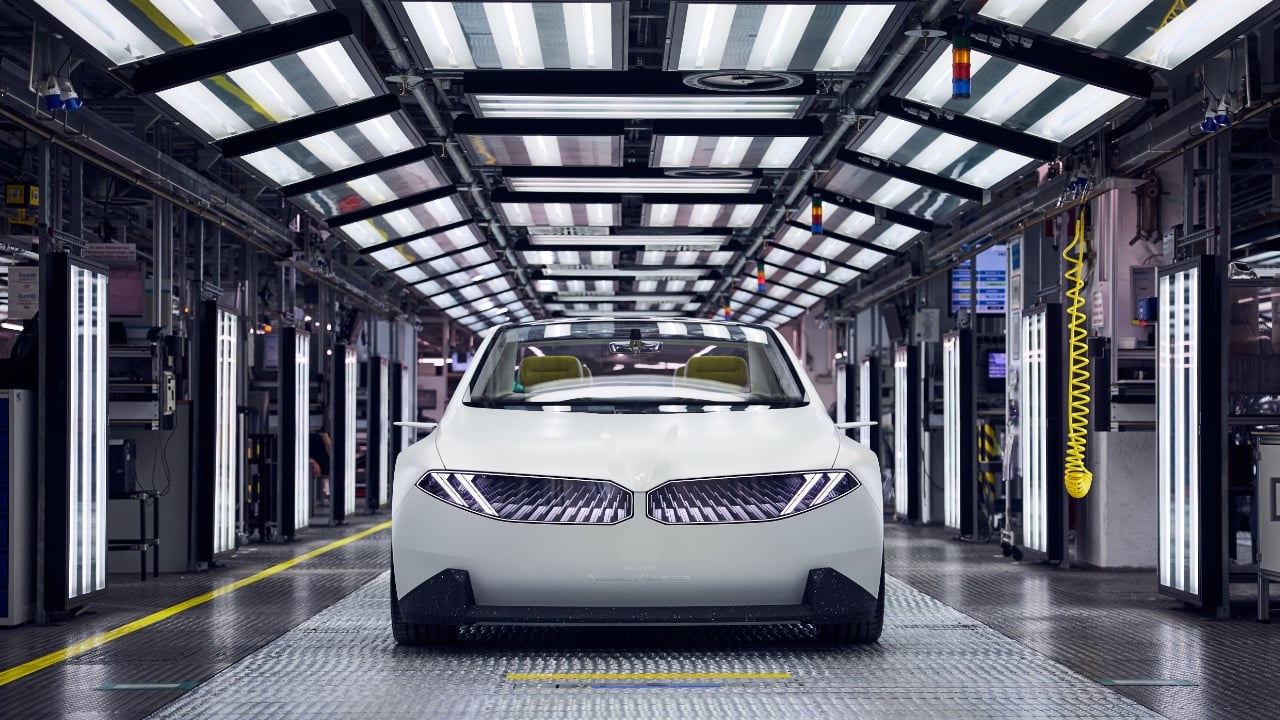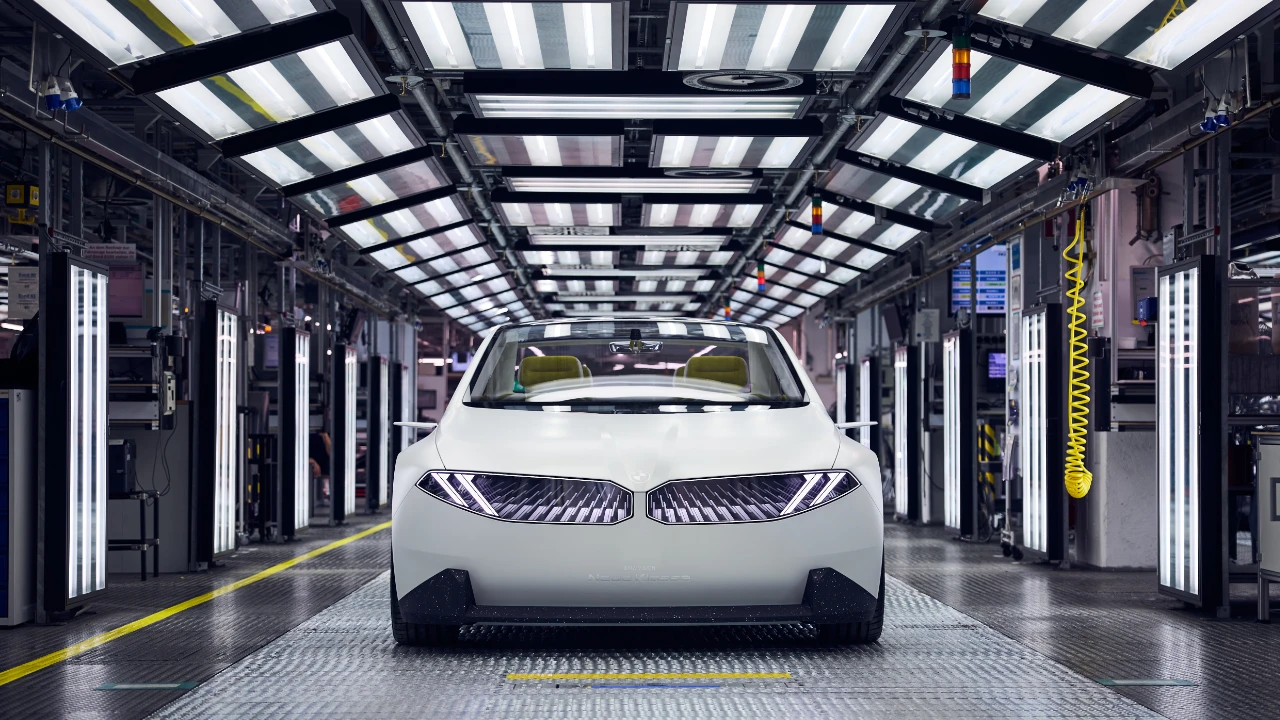[ad_1]
Durante la última década, CES Se ha convertido en una especie de espectáculo secundario de la tecnología automotriz y de vehículos eléctricos y este año no fue la excepción. Sin embargo, gran parte de la tecnología de automóviles y vehículos eléctricos que se exhibe en el evento a menudo se presenta como tecnología del futuro “sorprendente”. Por eso, en este artículo quería centrarme en algunas de las tecnologías de automóviles eléctricos más interesantes (y realistas) que vi en CES 2025. Comencemos.
1) BMW iDrive panorámico para Neue Klasse EV
BMW Una nueva clase de vehículos eléctricos Se exhibieron en el stand de la compañía y, aunque eran prototipos, se espera que los modelos de producción se lancen a finales de este año. El Neue Klasse es un gran reinicio para BMW Era la década de 1960Cuando ayudó a salvar a la empresa de la quiebra y a definir su identidad de marca moderna. en Salón de electrónica de consumo 2025BMW mostró el sistema panorámico iDrive de la compañía, que definirá la experiencia de software para los vehículos eléctricos Neue Klasse.
El sistema panorámico iDrive consta de una pantalla de pilar a pilar que muestra información en una estrecha franja negra impresa a lo largo de toda la parte inferior del parabrisas. Esta información incluye conceptos básicos de conducción (por ejemplo, velocidad, marcha, autonomía, etc.) en el lado del conductor, así como seis widgets personalizables en el espacio restante. Opcionalmente, esta pantalla de visión panorámica se extiende hasta la zona transparente del parabrisas del lado del conductor, actuando como una pantalla 3D (head-up display).
La pantalla táctil central de 17,9 pulgadas es la forma principal de interactuar con el iDrive panorámico. Esta pantalla no es rectangular, sino que está inclinada hacia el conductor, lo que la hace fácilmente accesible desde el volante de múltiples botones. Ofrece las funciones habituales de navegación e infoentretenimiento y permite asignar elementos de la interfaz de usuario a la pantalla de vista panorámica ubicada debajo del parabrisas. Los comandos de voz son otro método de entrada destacado para el sistema panorámico iDrive.
No espere encontrar el popular controlador giratorio iDrive en la consola central. Con el sistema panorámico iDrive, el “dial” desaparece para siempre.
2) Taxi eléctrico Zeekr RT Waymo
Si aún no has oído hablar de Zeekr, te espera una sorpresa. Zeekr es una marca china de automóviles eléctricos que ha estado causando sensación desde su debut hace tres años gracias a su impresionante línea de automóviles. Es propiedad de Geely, el fabricante de automóviles chino que también es la empresa matriz de Volvo, Polestar y Lotus. ¿Por qué esto importa? En primer lugar, Zeekr ofrece vehículos eléctricos de alto rendimiento y lujo como el 001FR plus Mix de 1.282 hp con tracción en las cuatro ruedas y las minivans 009 que mostró en CES 2025.
En segundo lugar, Zeekr vende sus coches eléctricos fuera de China, en países occidentales como Países Bajos, Suecia y Noruega. En tercer lugar, Waymo se ha asociado con Zeekr aquí en EE. UU. para complementar su flota de vehículos eléctricos autónomos Jaguar i-PACE con el taxi eléctrico Zeekr RT. Este vehículo eléctrico (vehículo autónomo) es prácticamente un salón sobre ruedas. Está apoyado por NVIDIALa nueva computadora central para automóvil DRIVE Thor de la compañía cuenta con espacios pequeños para mantener limpias sus cámaras.
El Zeekr RT se deriva de la minivan Mix antes mencionada, comparte su diseño sin pilares y probablemente tendrá la misma batería de 76 kWh y el mismo motor trasero de 415 hp. Lo que no encontrará dentro del Zeekr RT, al menos en su forma final, es un volante o pedales. Así es, este es el primer taxi eléctrico “verdadero” de Waymo. Como residente de San Francisco y usuario habitual de Waymo, no puedo esperar para probar el Zeekr RT, así que estad atentos a mis primeras impresiones.
3) La producción de Aptera EV está preparada para la energía solar
La historia de Aptera es Largo y sinuosopero en CES 2025, la compañía finalmente reveló su automóvil eléctrico solar listo para producción, junto con una asociación con… LG Energía para celdas cilíndricas. Ahora bien, tenga en cuenta que el Aptera no es un automóvil normal, sino un vehículo de tres ruedas y dos asientos con un pequeño espacio de 3,5 pies cúbicos. financiar. Pero también está cubierto de paneles solares que pueden proporcionar hasta 40 millas de alcance por día, lo que significa un día dedicado a hacer recados para la mayoría de las personas.
Gracias a su compuesto de moldeado de láminas de fibra de carbono (CF-SMC) y su construcción de aluminio, el Aptera pesa sólo alrededor de 2200 libras (incluida la batería de 44 kWh). Esto, combinado con un Cd (coeficiente de resistencia) de sólo 0,13, le da al Aptera un alcance de hasta 400 millas, lo que lo hace increíblemente eficiente. Además de cargarse desde paneles solares, también cuenta con un puerto NACS que admite carga rápida de CC en menos de una hora, así como carga de CA de nivel 2.
Tuve la oportunidad de sentarme en un “carrete” – un auto de exhibición que no funciona – con un interior prácticamente completo, y viajar como pasajero en un auto de prueba funcional, con un interior minimalista (asientos, volante, controles básicos ). El exterior parecía casi completo en ambos autos, pero el interior del cilindro era en realidad solo para mostrar, con materiales y calidad de construcción deficientes, algo que no se esperaría de un auto “listo para producción” que vale más de $40,000.
Sin embargo, mi viaje en Aptera fue lo suficientemente impresionante, incluso como pasajero, que quise incluirlo en este recorrido. Este vehículo eléctrico de tres ruedas parecía rápido, deportivo y divertido de conducir.
4) Cadillac OPTIQ EV con tecnología Dolby Atmos
Este año en CES 2025, Dolby Labs se asoció con Cadillac para llevar una pantalla Dolby Atmos al nuevo Cadillac OPTIQ. Obviamente, Dolby Atmos no necesita presentación, pero es posible que no estés familiarizado con el Cadillac OPTIQ. Es el SUV eléctrico más pequeño y asequible de la compañía y viene equipado con un sistema de sonido AKG de 19 bocinas con Dolby Atmos. Eso está muy bien, pero el Cadillac OPTIQ no es el único automóvil equipado con Dolby Atmos. Entonces, ¿cuál es el problema?
Primero, Dolby Atmos es estándar en el Cadillac OPTIQ de $53,000. No es una opción que venga simplemente en un paquete costoso. En segundo lugar, parece absolutamente increíble. Y escribo esto como alguien que escuchó Dolby Atmos en vehículos eléctricos Rivian, Lucid, Mercedes, Volvo y Polestar, y que trabajó en Dolby Labs como ingeniero durante 15 años junto con miembros del equipo de Dolby Atmos. En otras palabras, sé un par de cosas sobre esta técnica.
Mi experiencia escuchando Dolby Atmos en el Cadillac OPTIQ fue lo más cercano que he estado a estar en un estudio de grabación adecuado que admita Dolby Atmos. Escuché todo, desde A-ha. Llévame A la capilla de Rouen ¡Caliente para comenzar! Sinceramente, me quedé asombrado. Las voces sonaban particularmente claras y los graves no eran dominantes como suele ocurrir en muchos vehículos modernos. Mi colega Al Griffin está de acuerdo, así que no te lo pierdas. Artículo más detallado.
5) Uso de vehículos eléctricos operados a distancia
Probablemente ya haya leído sobre servicios de transporte compartido como Waymo, Cruise (ahora descontinuado) y Zoox (aún en prueba). Todos estos vehículos eléctricos utilizan AV (vehículos autónomos) que dependen de sensores costosos como LIDAR y computadoras a bordo que consumen mucha energía. ¿Qué pasaría si en lugar de utilizar vehículos autónomos, su servicio de transporte utilizara vehículos eléctricos operados de forma remota? ¿Qué pasa si le entregan el automóvil y usted conduce, lo que reduce el riesgo de responsabilidad?
Eso es exactamente lo que Vay ofrece actualmente en un área geocercada en el centro de Las Vegas utilizando una flota de vehículos eléctricos Kia Niro. En CES 2025, tuve la oportunidad de viajar a bordo de un vehículo operado de forma remota y ver cómo los operadores remotos conducen los vehículos. Vay recientemente creció de 2 a 20 vehículos eléctricos y planea tener 100 en las carreteras que presten servicio en un área más grande que Las Vegas para fines de 2025. Lo mejor de todo es que Vay garantiza precios que representan la mitad del costo de Uber.
Lo mejor de la tecnología de Vay es que solo requiere actualizar los vehículos eléctricos Kia Niro con cuatro cámaras, una interfaz de bus CAN, una computadora simple y cuatro módems LTE en tres operadores diferentes. Esta configuración garantiza una latencia de menos de 100 milisegundos y proporciona al operador remoto una vista de alta resolución de la carretera y de cada espejo retrovisor. Mientras tanto, el operador remoto utiliza una configuración similar a un simulador de carrera dentro del centro de comando remoto de Vay.
Esta es la forma principal en que vuelan drones militares como el MQ-9 Reaper. No te pierdas la historia de mi colega Jake Kroll Dónde está Se sumerge en Vay con más detalle..
Y ahí lo tienes. Esta es la tecnología de vehículos eléctricos que me llamó la atención en CES 2025. Tenga en cuenta que esta no es de ninguna manera una imagen completa de toda la tecnología de automóviles y vehículos eléctricos que vi en la feria. sony El Afeela mostró su vehículo eléctrico casi de producción, Honda mostró sus conceptos futuristas de la Serie 0 por segundo año consecutivo y Scout Motors llevó al centro sus impresionantes vehículos eléctricos todoterreno (Terra y Traveler). Plaza.
También te puede gustar
[ad_2]
Source Article Link


